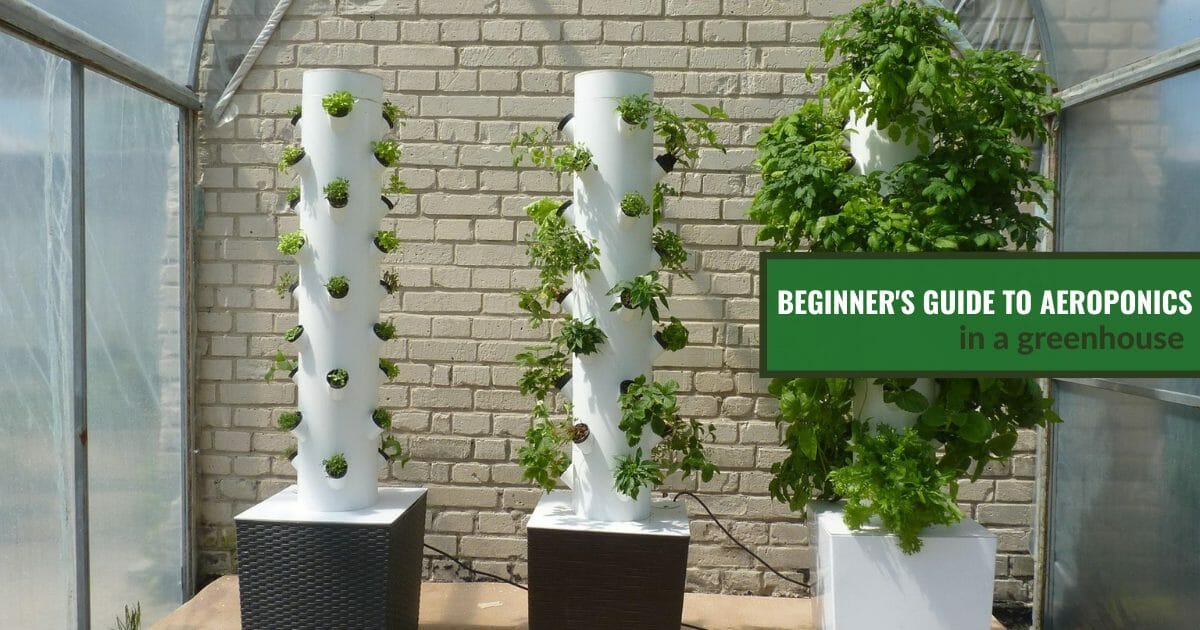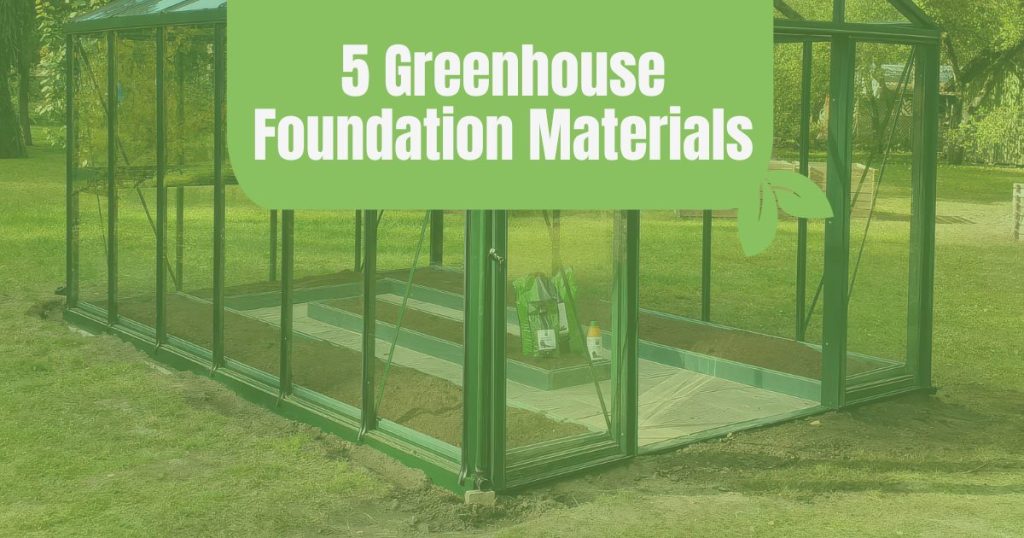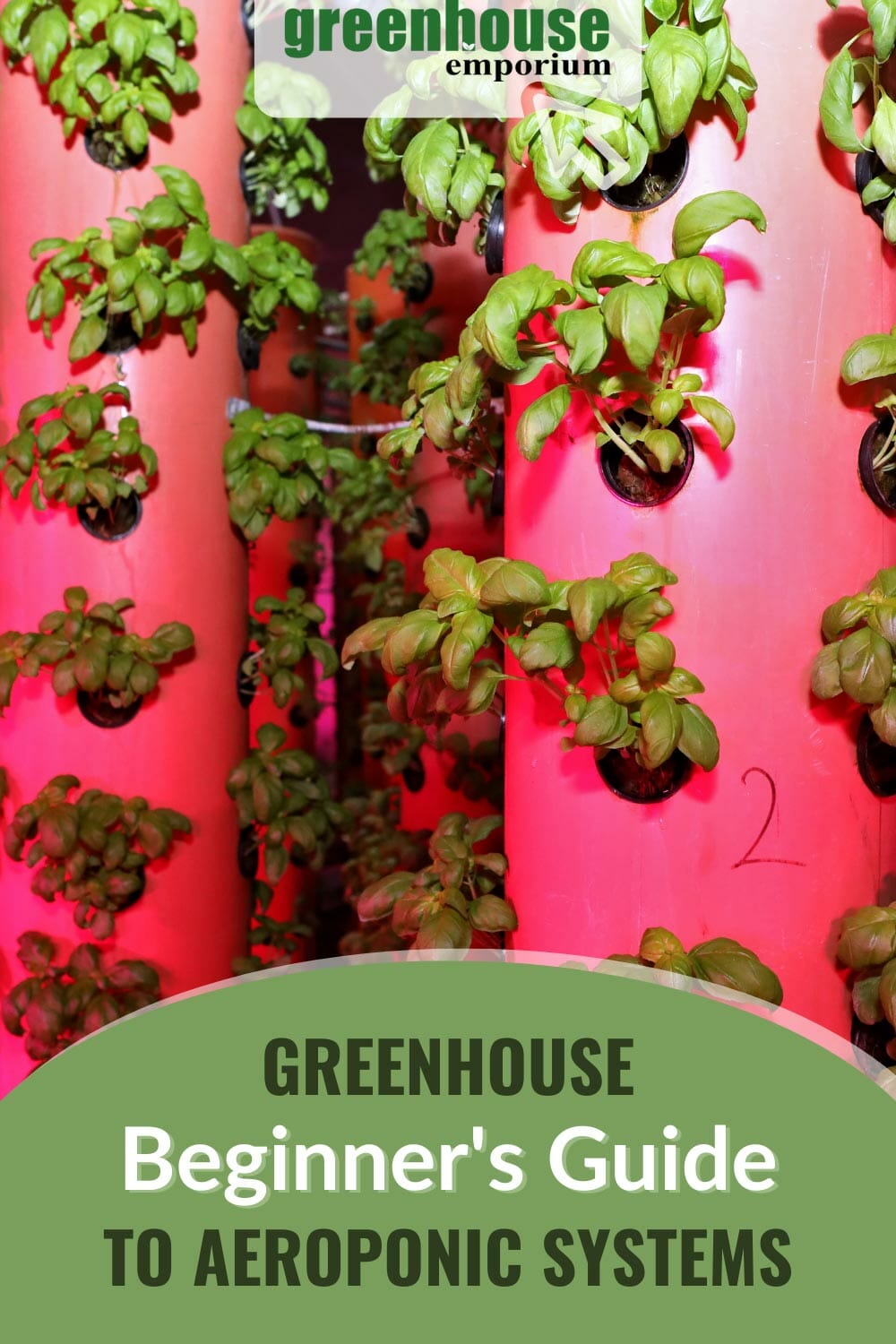
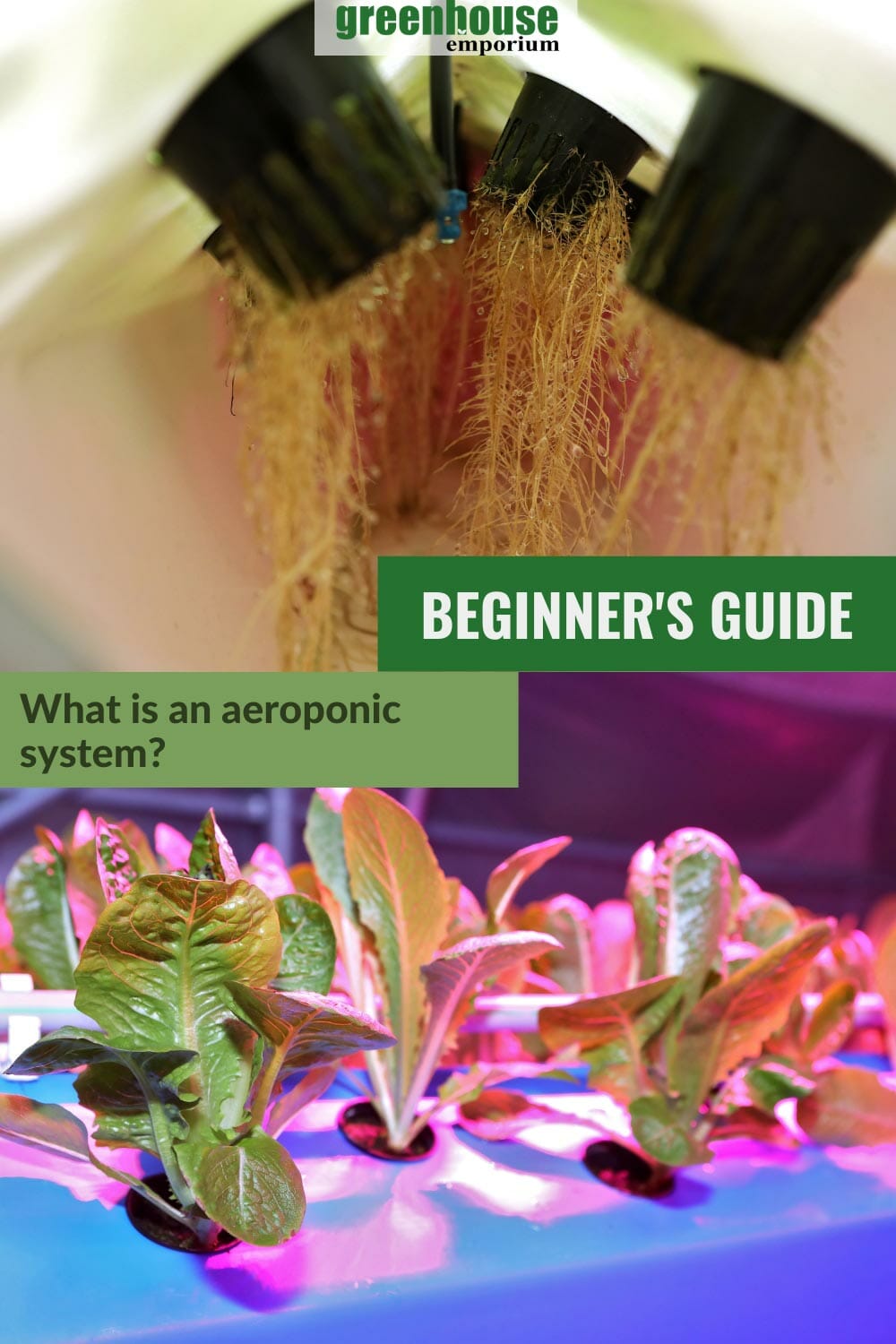
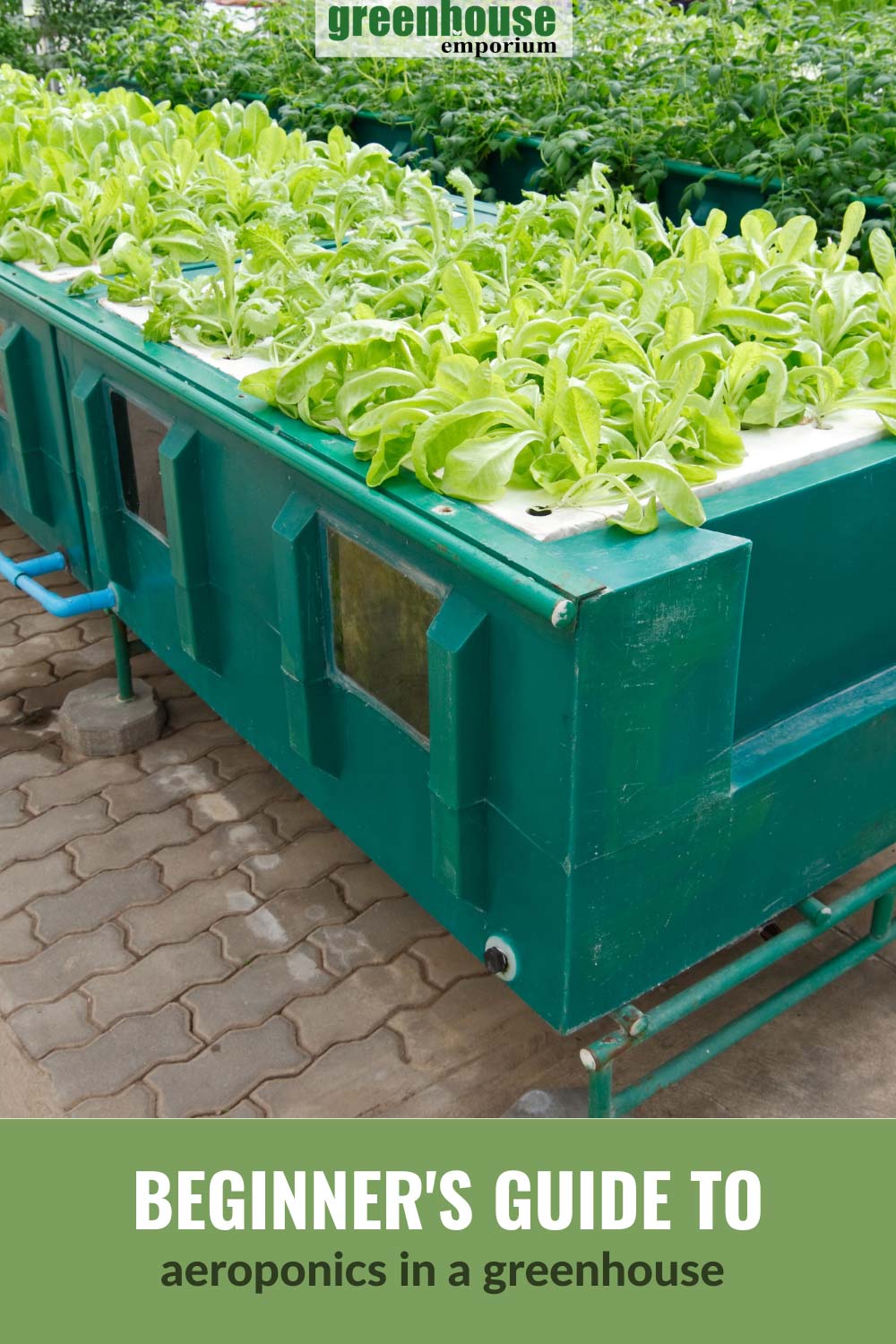
Aeroponic gardening offers a year-round solution to growing many different kinds of fruits, vegetables, herbs, and flowers. Aeroponics is space-saving, pesticide-free, and highly efficient. But how do you know if it’s the right choice for you?
Setting up an aeroponic system in a greenhouse is an excellent way to increase yield and promote faster plant growth. But there’s more to it than it seems. For example, unlike hydroponics, it’s best to buy a manufactured aeroponics system, although it’s not impossible to DIY.
There are different types of aeroponic systems, some of which work better for greenhouses than others. In this article, we’ll explain what aeroponics is all about, which type is most suitable for greenhouses, how much they cost, and what materials you’ll need to get started.
What is aeroponics?
Aeroponics is a growing method that involves growing plants with just water and no soil. When using this method, plants are suspended in the air and routinely misted via a root sprinkling system. The water is filled with nutrients, providing everything the plants need to grow.
This is in contrast to hydroponics, which offers many of the same benefits as aeroponics, but instead keeps the plants submerged in water at all times.

Benefits and disadvantages of aeroponics
Aeroponic systems are well known for the benefits they bring to a greenhouse. But there are some disadvantages, too. If you’re considering installing an aeroponic system instead of (or in addition to) gardening conventionally with soil, it’s important to consider the pros and cons, which we’ll go over in this section.
Benefits of aeroponics
When grown via aeroponics, crops have a significantly higher yield and faster growth rate compared with soil-grown plants. Because the plants take up less space, require less water, and need little to no pesticides, aeroponics is seen as a more environmentally friendly method than conventional agriculture. Additionally, the water is usually recycled via a closed-loop filtration system, reducing water consumption even further.
While soil usually provides everything a plant needs to grow without additional inputs, traditional gardening is often accompanied by unwanted pests and diseases. Although aeroponic systems are not entirely immune to pests and disease, the enclosed environment does help prevent most problems.
Finally, there’s an aesthetic appeal to aeroponic systems. The floating plants with dangling roots can look futuristic, especially when grown vertically. Plus, to maintain stable temperatures, most gardeners choose white planters, offering a clean, modern look.
In summary, some benefits of aeroponic greenhouses include:
- Faster growth
- Better yield
- Low water usage
- Fewer pests
- Better aesthetics
- Environmentally friendly
- Requires minimal space
Disadvantages of aeroponics
Despite their benefits, there are some disadvantages to aeroponic systems. Mainly, they can be complex to install and manage long-term.
Installing an aeroponics system in your greenhouse will completely transform it. You’ll need special containers to hold the plants, a controlled misting system that targets the roots, carefully managed temperatures, and a fully enclosed system.
While pests aren’t common in aeroponic greenhouses, you’ll need to be careful that no stagnant water builds up on workbenches and the floor. Some pests spawn in algae, so you’ll need to clean everything regularly.
Aeroponic systems also require some expertise to manage effectively. You’ll need to pay constant attention to the pH levels and nutrient density of the water in the pumps. You’ll also need to ensure the automatic timers operate on the correct frequency for the type of plants you’re growing.
In summary, the disadvantages of aeroponics include:
- Requires more expertise
- Needs a fully enclosed environment
- Temperatures require careful regulation
- Susceptible to some pests
- Requires routine cleaning
- Susceptical of power outages
Types of aeroponic systems for your greenhouse
There are three main types of aeroponic systems: low-pressure aeroponics, high-pressure aeroponics, and ultrasonic fogger aeroponics. The main difference between them relates to how the water is released to the roots. Otherwise, the systems and environment are generally the same.
Low-pressure aeroponics
This is the most common type of aeroponic system. It’s the easiest to set up and is more widely available commercially. For this reason, it’s the most popular system used for hobby greenhouses.
These systems mist water droplets that feed the plants a nutrient-rich solution. This system requires a pump, a controlled irrigation system, and an enclosed environment.
High-pressure aeroponics
A high-pressure aeroponic system is more advanced, which also means it can be more expensive to set up in a greenhouse. These systems are mostly used for commercial crop production, rather than backyard gardening.
With these systems, high-pressure pumps atomize the water into tiny droplets, creating a very fine mist. Because the water is atomized down to 50 microns or less, it also provides more oxygen for the plants, promoting even better growth.
Ultrasonic fogger aeroponics
These types of aeroponic systems are the least common. They’re usually found in highly controlled environments such as a lab. Similar to high-pressure aeroponics, this type of system atomizes water droplets so small it appears like fog.
Despite being the most advanced, ultrasonic fogger aeroponics is not necessarily the most effective. Some plants find it difficult to retain moisture when it’s released in such tiny droplets, leading to more water usage.
How to set up an aeroponic system in your greenhouse
Installing an aeroponic system in your greenhouse isn’t something you can easily DIY. The best way to start gardening with aeroponics is to simply buy a manufactured aeroponic system. A system specifically designed for the hobby gardener is usually easy to set up and start using in your greenhouse.
If you’re interested in converting your entire greenhouse into an aeroponic system, be prepared for a higher installation cost. You might even consider having a contractor to help you. But with the right amount of effort, such a set-up can be well worth it!
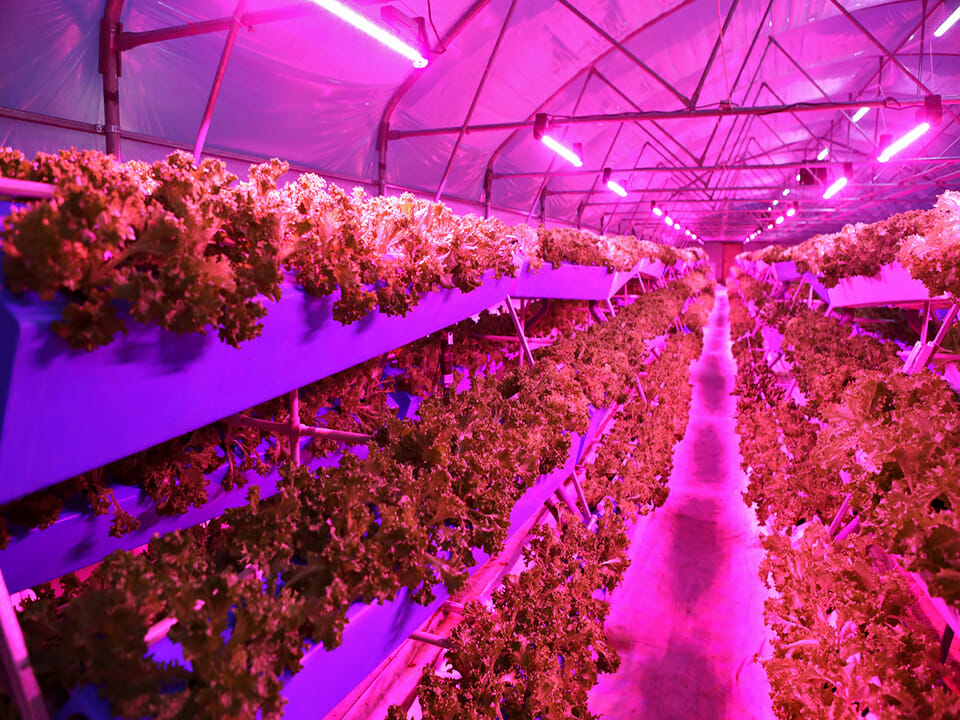
General requirements for an aeroponic system
Every aeroponic system needs at least the following for a stable environment:
- Humidity level between 60-70%
- Stable temperatures, ideally between 65 °F (18 °C) and 75 °F (24 °C)
- Filtered, controlled water: the pH should be between 5.5-6.5, and besides the essential nutrients, there should be no added minerals, chemicals, micro-organisms, or Volatile Organic Compounds
- Controlled sunlight to the foliage via grow lights, ideally between 15,000-20,000 lux
- A controlled irrigation system, ideally an automatic one that routinely mists the roots on a frequent, consistent schedule
- Controlled nutrient concentration levels in the water
- A tight enclosure that can sustain the necessary high humidity levels
If you’re having trouble maintaining temperature, make sure to check out our guides on cooling and heating the greenhouse!
Materials needed for an aeroponics system
When installing an aeroponic system in your greenhouse, you’ll need a minimum of the following:
- Opaque planters or containers: These can be vertical or horizontal and need to be large enough for an irrigation system to fit inside. Only the roots should be within the dark environment, with the foliage outside under the light.
- A controlled irrigation system: This needs to be fed through the planters so it reaches the roots of all plants inside. Ideally, it should be on an automatic timer to ensure your plant roots are misted on a consistent schedule. These systems will need to have a minimum of a pump, PVC pipes, and misters.
- A pH meter: It’s important to maintain a stable pH level (about 5.5-6.5).
- An EC/TDS meter: To track the nutrient level in the water supply.
- Temperature/humidity gauge: To help you monitor/resolve any temperature fluctuations. Ideally, you should choose a temperature gauge that also tells you the humidity levels.
- Grow lights: You can mimic the right sunlight levels in a greenhouse without the need for grow lights. However, if your aeroponics system is indoors or in a shaded area, grow lights are essential.
How much does it cost to install aeroponics in a greenhouse?
When considering how much it costs to install aeroponics in a greenhouse, many factors need to be taken into account. The type of system and its size are two of the most important deciding factors.
You can purchase ready-made aeroponic systems online, which look like tall cabinets. These can easily be fit inside the greenhouse. The price range of these can vary anywhere from $100 to $5000, depending on their size and complexity.
Alternatively, you can have your entire greenhouse transformed into an aeroponics system with large columns, pumps, and irrigation systems. You can achieve this yourself as an ambitious DIY project, or seek professional help. Prices vary depending on how large the system is, so it’s best to get a quote from the supplier.

